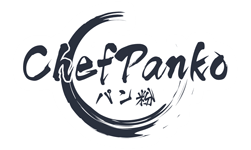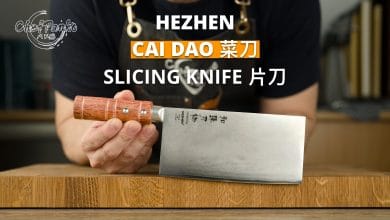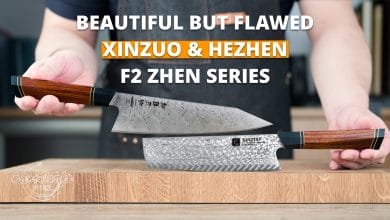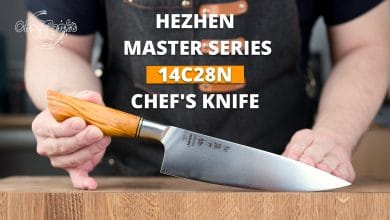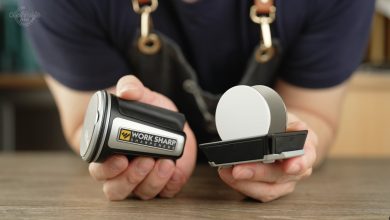Knife Aesthetic & Specifications
The comes with stainless steel cladding and a Ginsan core or also known as Ginasako, Gin3, or Silver #3. This core material will perform like high-carbon steel, with the added benefit of being rust-resistant. The Ginsan core is heat treated at around 61. This knife came with a custom handle that is exclusively sold at Tokushu Knife. The handle is made from stabilized maple burl wood and has an acrylic middle and ebonite ferrule (vulcanized rubber). The cladding has an elegant Kasumi (mist) finish and the Shinogi line is consistent and nicely done on both sides.

The from comes with an Engraving and a stamped company name and steel indication on the other side. The blade length from the neck toward the tip is around 180mm and comes with a cutting edge of 170mm.
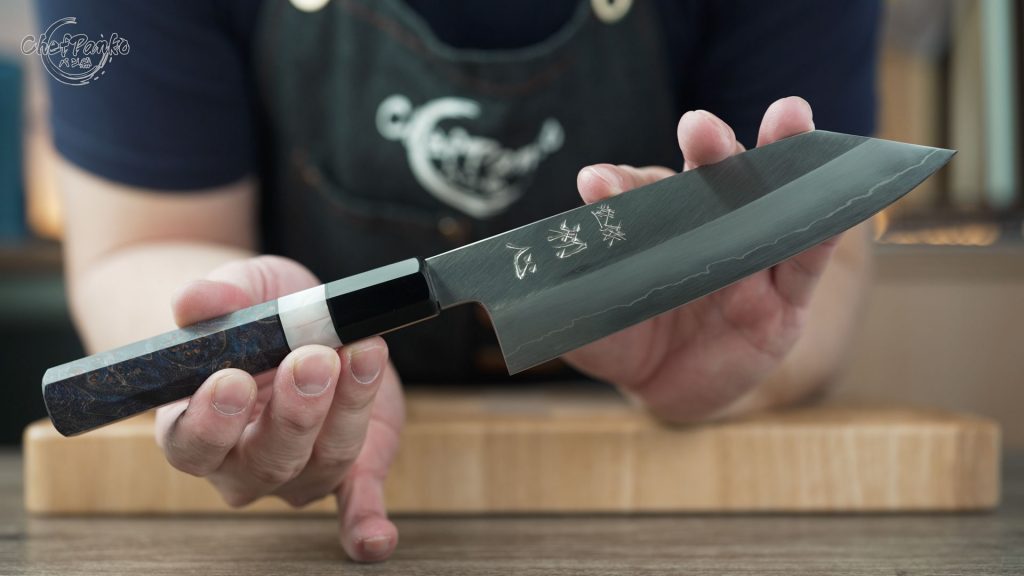
The knife weight
The knife only weighs 165 grams which is very light due to the blade anatomy, the knife does not feel fragile and feels quite hefty and adds extra grip without being heavy. Combined with the excellent balance point it feels very comfortable in your hands.
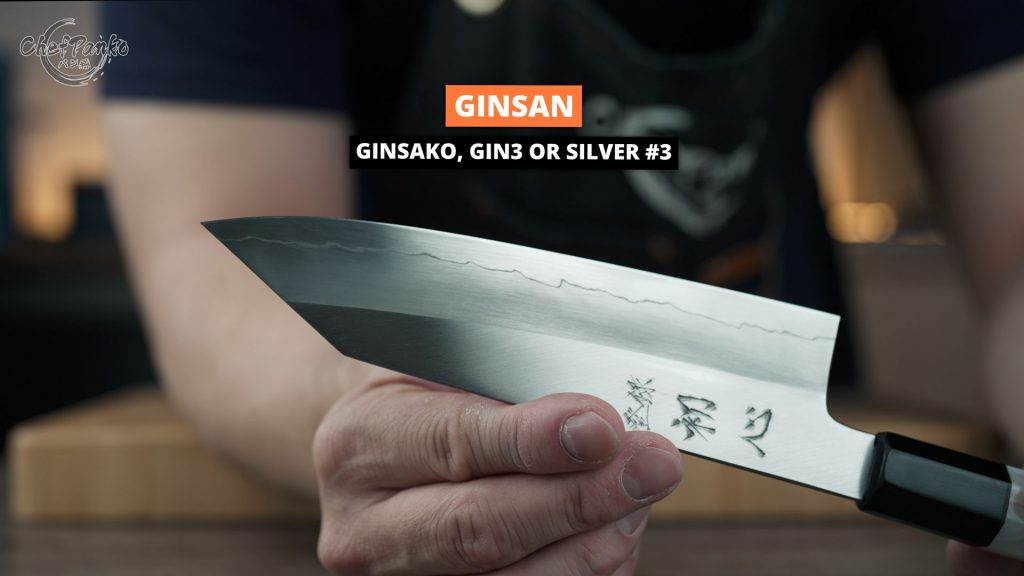
Gripping Style & Balance Point
The point of balance is at the neck area which is also the best place to use a pinch grip for optimal control and balance distribution. By griping in that area the knife will neither be front nor handle heavy. Giving you optimal control over the blade.

Knife Handle & Comfort
The custom Wa-handle is from the ‘’out on a limb series’’ by Andrew of ‘’Get a Grip workshop’’. Each edition is unique and exclusively sold at Tokushu Knife. There is no installation fee if you order a blade and a custom handle from Tokushu Knife.

The handle feels very comfortable in my hand due to the squared octagonal handle.

My fingers wrap around it very nicely providing me with extra grip.
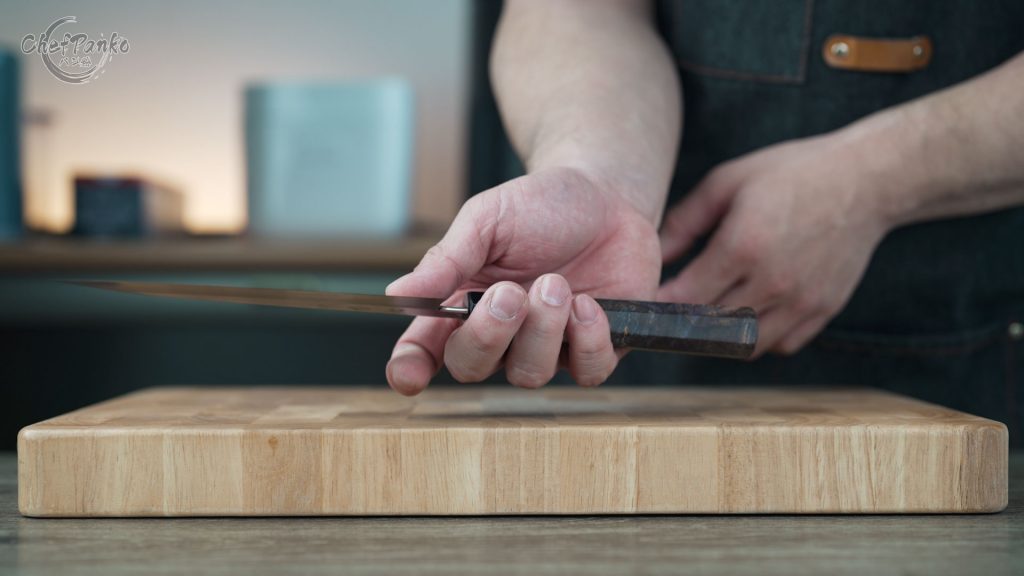
The collar is made from Ebonite which is a hard vulcanized rubber material which is waterproof and can take a beating. The white acrylic adds to the overall aesthetic of the handle. The blade is nicely sealed and placed in the middle by Tokushu Knife.

Optional Sharpening service by Tokushu Knife
To bring out the knife’s full potential Tokushu Knife recommend their sharpening service. This added sharpening service is optional, but Tony from was very confident in his sharpener Zach Peters. And mentioned that the review sample will include the added sharpening service.

Sharpening by Zach Peters from Tokushu Knife
After testing the knife I can say that Zach Peters did an excellent job, the entire edge was completely even and consistent in sharpness. The edge felt very smooth, and I think that Zach Peters finished the knife on a pretty high-grit stone of around 6000 or higher. I’m not sure if the knife came with a factory angle of around 15 degrees or if Zach Peters altered the angle. As the knife came with an angle of around 15 degrees which is an excellent choice for sharpness and edge durability.
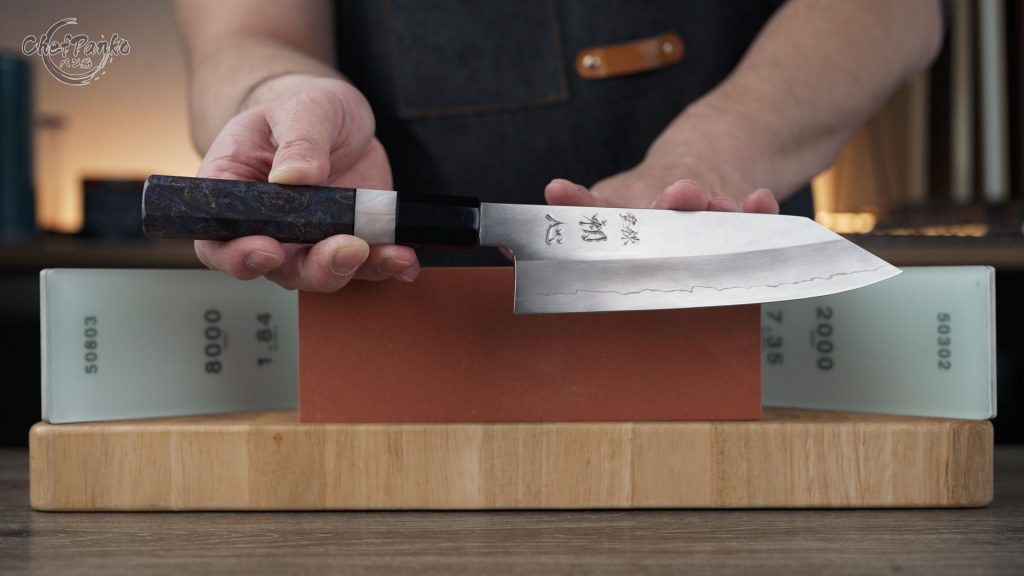
Sharpness & Edge Retention
The Ginsan core material can take a very sharp edge that is comparable to a high-carbon knife. The Rockwell hardness is around 61 which can last you around 7 months if used at home. And if you maintain the knife with regular honing sessions before you need to touch it up on a whetstone.
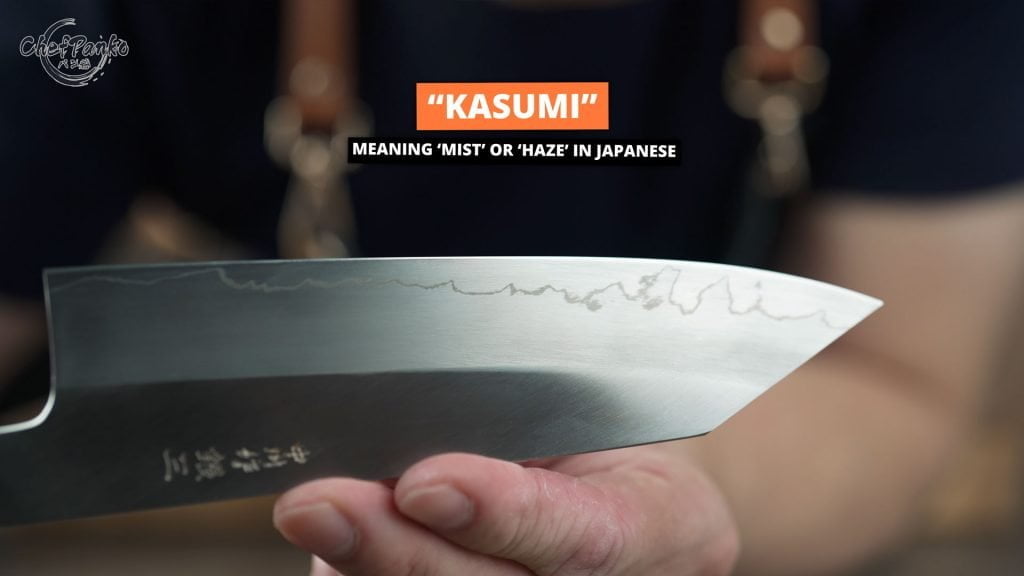
Blade Profile
The blade comes with a very smooth gentle curved profile that is very versatile. You can push cut with it. Pull cut with it, and you can rock with the knife. The pointy tip is ideal for tip work and gives you more precision and nimbleness. The knife height is 47mm which provides good knuckle clearance. Due to the short blade length and gently curved profile you want to glide and add more travel distance with the knife to get a completely clean cut.
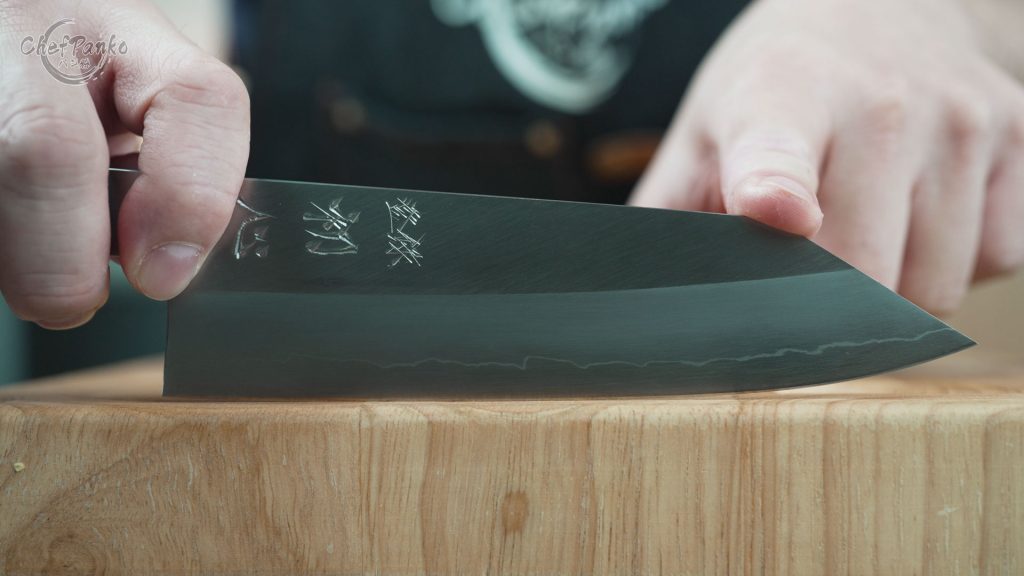
Distal spine taper & Fit and Finish
The knife thickness at the heel is 3.0mm, 2.8mm in the middle, and 0.8mm at the front. While the knife has some gradual thinning at the spine it has no real purpose in cutting performance. However, it does add extra gripping comfort, sturdiness, and a hefty feel without being heavy. The spine and the choil are nicely rounded and polished by Satoshi Nakagawa.
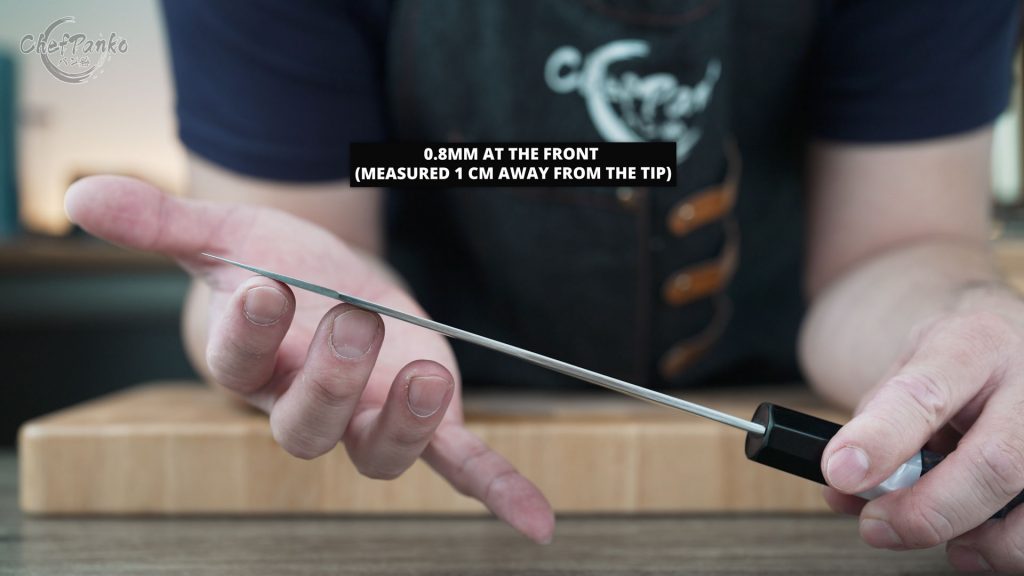
Shinogi Line & Blade Grind
The real performance difference comes with the Shinogi line and the grind below it. Despite having a thick spine the Shinogi line tells you that Satoshi Nakagawa gradually thinned the knife to prioritize a smooth sharp-cutting performance. Due to the added Shinogi line, this knife will have great sturdiness and meat behind the spine without sacrificing the thin cutting performance. And with a Shinogi line, you also get a visible indication of when you plan to thin the knife as you just need to follow the line and push the Shinogi a bit up while thinning.

Key Takeaway & Recommendation
The Satoshi Nakagawa Bunka is a very good knife, the added Chiseled Kanji gives the knife a nice characteristic.

The custom handle gives the knife a nice finishing touch which is also nicely installed by . The Out on a limb series was surprisingly more comfortable than I expected due to the squared octagonal handle compared to a rectangular-shaped handle.
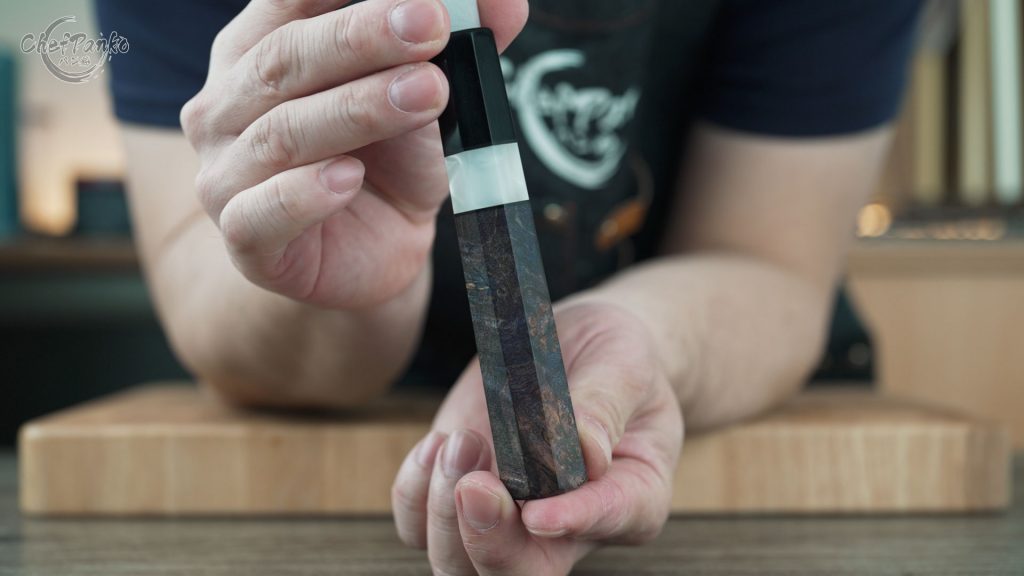
Overall the is very versatile and the only drawback is the length. The added tip is an added benefit as it gives you more control with tip work compared to a Santoku and it gives you less drag. The knife is suitable for those that want the performance of a High Carbon knife without worrying about rust. The knife takes a similar sharp edge as a high-carbon knife and is easier to maintain due to its stainless properties.
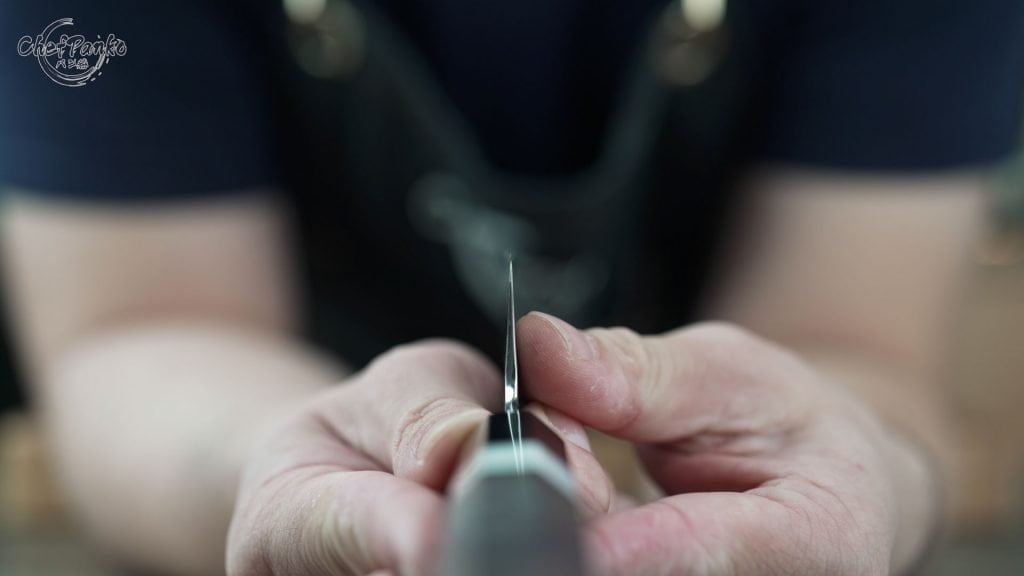
🛒S H O P:
DISCOUNT CODE: DISCOUNT10 (for 10% off)
▶ If you want to know what knife you should buy you can read the following article ''Choosing your knife''. ▶ On my youtube channel, I have reviewed a lot of different knives. You can watch the playlist by clicking here. ▶ Click here, if you want to search for other kitchen knives on: Amazon. ▶ , if you want to search for other Chinese knives on . ▶ Check out my gear on Kit: https://kit.co/ChefPanko ▶ Check out my recommendation on Amazon: https://www.amazon.com/shop/chefpanko Full Disclosure: If you purchase from these links I get a small commission that goes towards supporting the channel and website. As an Amazon Associate, I earn from qualifying purchases ▶ If you have any questions about Japanese knives made in China or about some of the brands feel free to ask it in the comment section below. Thank you for your support and feedback. ▶ Want to work with me? Please use the contact form by clicking here.
